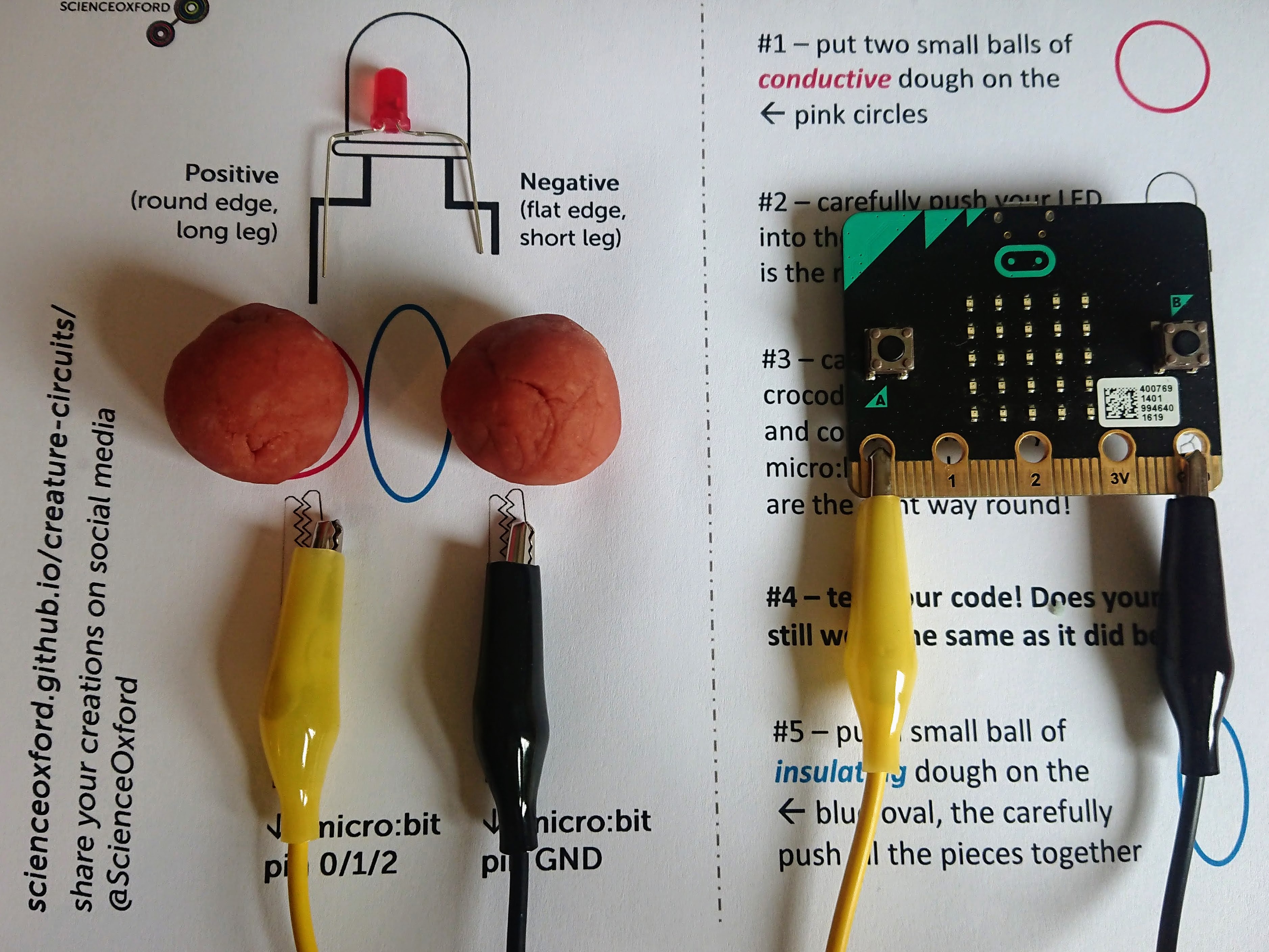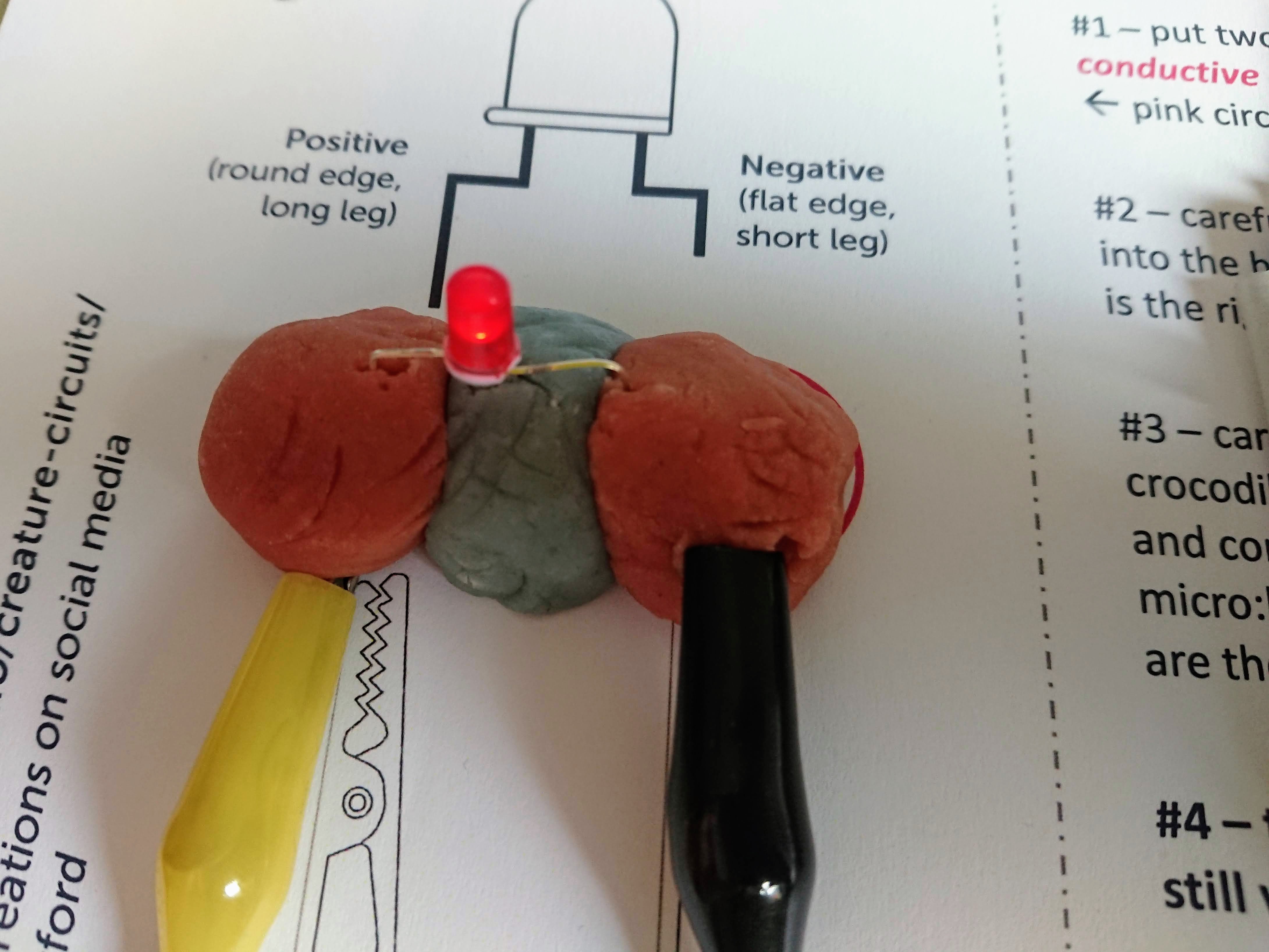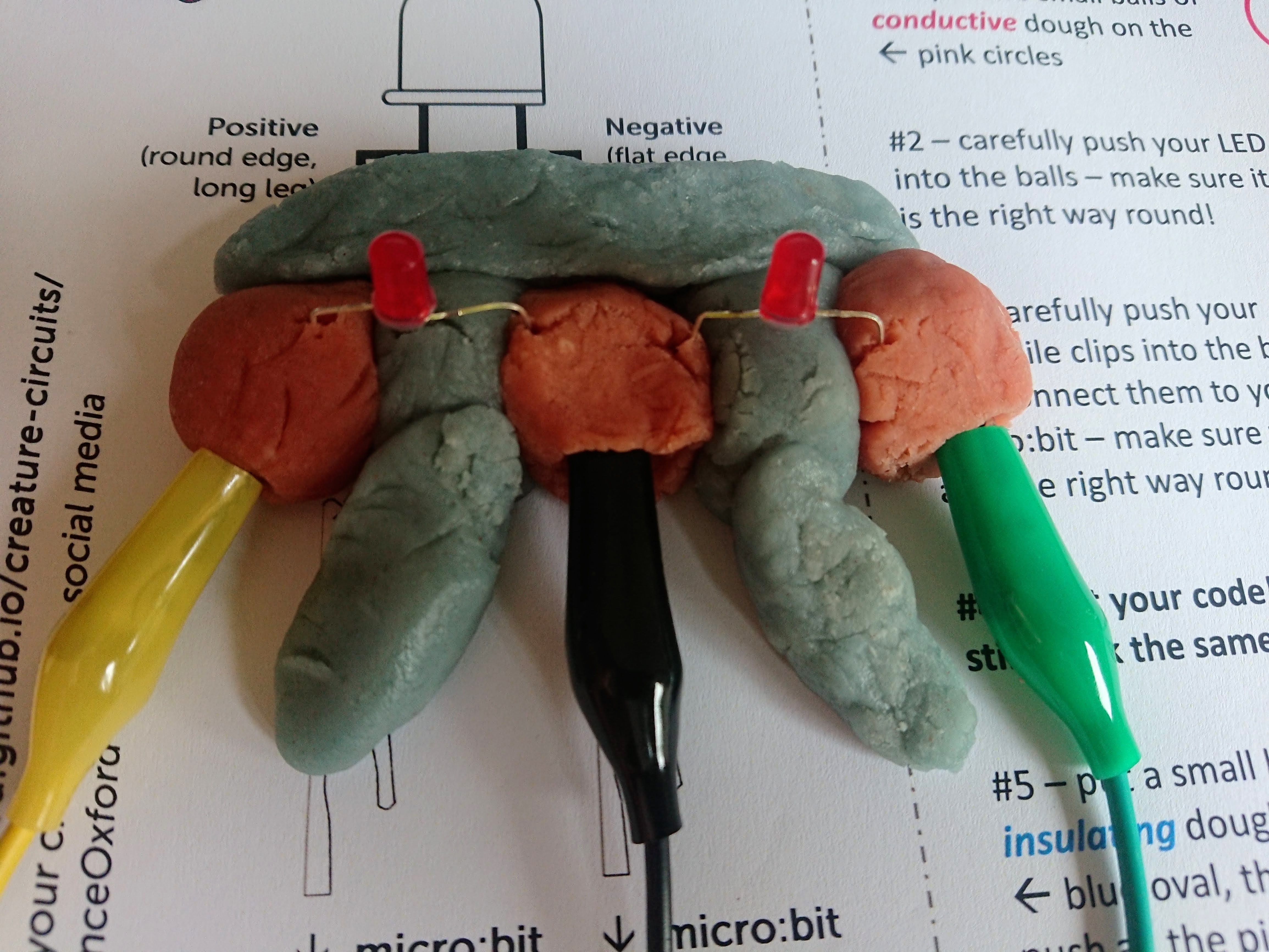Making a circuit using dough
Now you have tested your LED circuit, and your code, you can begin to create your creature!
The salt and water in conductive dough mean that electricity can pass through it. It is not as good as a wire at the job though, and has quite a lot of resistance.
To help keep the resistance in your circuit down, use the smallest amounts of dough that you can for each connection.
Test out your dough by modifying your LED crocodile clip circuit. You can use our template to help you.

- Keep the crocodile clips connected to the micro:bit, but unplug your LED from the other ends.
- Take two small bits of conductive dough, and roll them into balls.

- Push the LED legs into each ball - make sure they don't touch each other, and remember which leg is the positive and which leg is the negative - you can use our template to help you.
- Push the crocodile clips that are connected to your micro:bit into the two balls of dough with your LEDs in and test your circuit - does your LED still light up?
- Take a piece of insulating dough - this doesn't allow electricity to flow through it, like the plastic around the crocodile clips - and put it between your two conductive balls. Gently push it together so the three bits of dough join togther, then test it again - does your LED still light up?

If your tests above worked, then you can add more dough pieces and create your creature!
Remember to keep your pieces small, or the LEDs might not light up!



